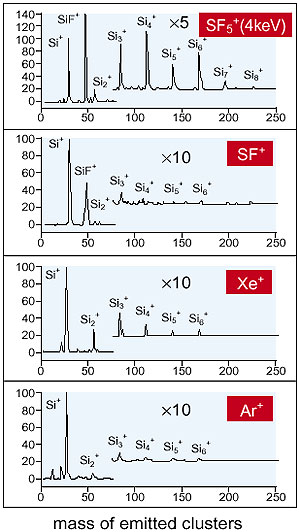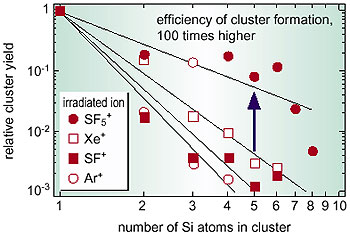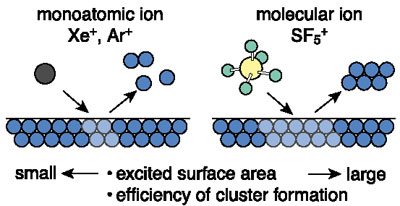Clusters are particles which have a diameter of several nm, containing from a few to several hundred atoms. The electrical and photoemission properties of such particles are quite different from those of ordinary bulk materials. Clusters are usually generated by laser ablation or electron irradiation methods. On the other hand, ion irradiation methods provide nonstoichiometric clusters through reactions between energetic ions and target atoms. However, an extremely high flux of ions is required to obtain an adequate number of clusters, since the efficiency of cluster formation by ion irradiation is quite low. We have observed strongly enhanced cluster formation when irradiating with molecular ions such as SF5+, which have a relatively large diameter compared with that of atomic ions (Fig. 6-11). By this method, the cluster yield becomes more than 100 times higher than that of monoatomic ion irradiation (Fig. 6-12).
When the solid surface is bombarded by large molecular ions, the excited area at the surface increases with the size of the incident ion. The larger excited area is considered to promote surface atom emission, which in turn promotes cluster formation. Enhanced cluster formation is observed not only for a silicon target surface, but also for carbon, boron, and beryllium targets. Furthermore, if the Si surface is bombarded by reactive molecular ions such as C6 SF5+, binary clusters (Si-C) can be obtained. It is suggested that the present technique could lead to the fabrication of new materials in the nm region, such as multi-element and isotopic clusters which have physical properties quite different from those of the ordinary stoichiometric compounds. |



